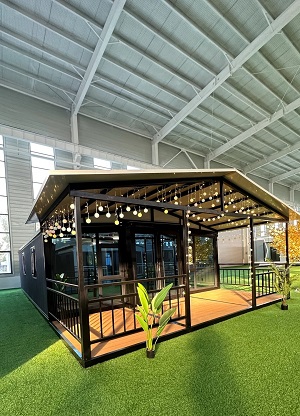Why Are Prefabricated Houses Becoming the Future of Modern Living?
2025-11-25
In recent years, Prefabricated houses have gained significant attention as an innovative, cost-effective, and sustainable housing solution. Unlike traditional constructions, prefabricated houses are built in controlled factory environments and assembled on-site, reducing construction time and ensuring consistent quality. I often wonder, why are more homeowners and developers turning to prefabricated solutions? The answer lies in efficiency, affordability, and flexibility.
What Makes Prefabricated Houses Different from Traditional Homes?
The core advantage of Prefabricated houses is their modular construction approach. Each component is manufactured off-site and transported to the building location for assembly. This method ensures:
-
Reduced construction time
-
Lower labor costs
-
Consistent quality control
-
Minimal environmental impact
I asked myself, can these homes truly match the durability of conventional buildings? Modern prefabricated houses use high-quality materials, including steel frames, reinforced concrete panels, and eco-friendly insulation, ensuring longevity and safety comparable to traditional homes.
How Do Prefabricated Houses Save Time and Cost?
One of the most compelling aspects of Prefabricated houses is their efficiency. Since components are manufactured simultaneously with site preparation, the overall project timeline is significantly shorter. For example, while a traditional house may take 6–12 months to complete, a prefabricated home can often be assembled within 2–4 months.
A simple comparison table highlights the benefits:
| Feature | Traditional House | Prefabricated House |
|---|---|---|
| Construction Time | 6–12 months | 2–4 months |
| Labor Cost | High | Moderate |
| Material Waste | High | Low |
| Energy Efficiency | Variable | High (factory-controlled) |
| On-Site Disruption | Significant | Minimal |
What Are the Key Technical Specifications of Prefabricated Houses?
Prefabricated houses are designed to meet various needs, from residential villas to commercial buildings. Key specifications include:
-
Structure: Steel or timber frame, reinforced concrete panels
-
Wall Material: Insulated sandwich panels for thermal and sound insulation
-
Roof: Light steel trusses or modular roof panels
-
Flooring: Composite or reinforced materials for durability
-
Foundation: Shallow reinforced concrete slabs or adjustable steel base for easy assembly
-
Customization: Flexible layouts, finishes, and sizes to suit different climates and lifestyles
By combining these parameters, Shandong Liansheng Prefabricated Construction Co., Ltd. ensures that every project is high-quality, durable, and energy-efficient.
Are Prefabricated Houses Environmentally Friendly?
Absolutely. Prefabricated houses reduce construction waste, utilize sustainable materials, and improve energy efficiency. Factory-based production minimizes errors and reduces material wastage compared to on-site building. Additionally, modern insulation systems and energy-efficient designs contribute to lower heating and cooling costs.
FAQ: Prefabricated Houses
Q1: How long does it take to build a prefabricated house?
A1: Typically, a prefabricated house can be completed in 2–4 months, depending on size, design, and site conditions. The factory production process and simultaneous site preparation significantly reduce construction time.
Q2: Can prefabricated houses withstand harsh weather conditions?
A2: Yes, prefabricated houses are engineered with durable steel frames, reinforced panels, and weather-resistant materials, ensuring excellent stability and protection against extreme weather such as heavy rain, wind, and snow.
Q3: Are prefabricated houses customizable?
A3: Definitely. Prefabricated homes offer flexible layouts, exterior finishes, and interior designs. Shandong Liansheng Prefabricated Construction Co., Ltd. works closely with clients to tailor each home according to personal preferences and functional requirements.
Q4: How cost-effective are prefabricated houses compared to traditional homes?
A4: Prefabricated houses generally cost 10–30% less than conventional homes. Savings come from reduced labor, shorter construction periods, minimized material waste, and higher energy efficiency over the building's lifespan.
Why Should You Choose Prefabricated Houses?
Choosing Prefabricated houses means embracing a modern, efficient, and sustainable lifestyle. The combination of speed, affordability, durability, and eco-friendliness makes them a superior choice for contemporary homeowners and developers alike. With professional expertise, Shandong Liansheng Prefabricated Construction Co., Ltd. delivers tailor-made prefabricated solutions, ensuring quality construction and timely delivery for every client.
Whether you are looking to build a cozy residential villa, a vacation home, or a commercial structure, prefabricated houses provide the flexibility and innovation that traditional methods cannot match. Investing in a prefabricated house today is a step toward smarter, faster, and greener construction for the future. Contact us.





